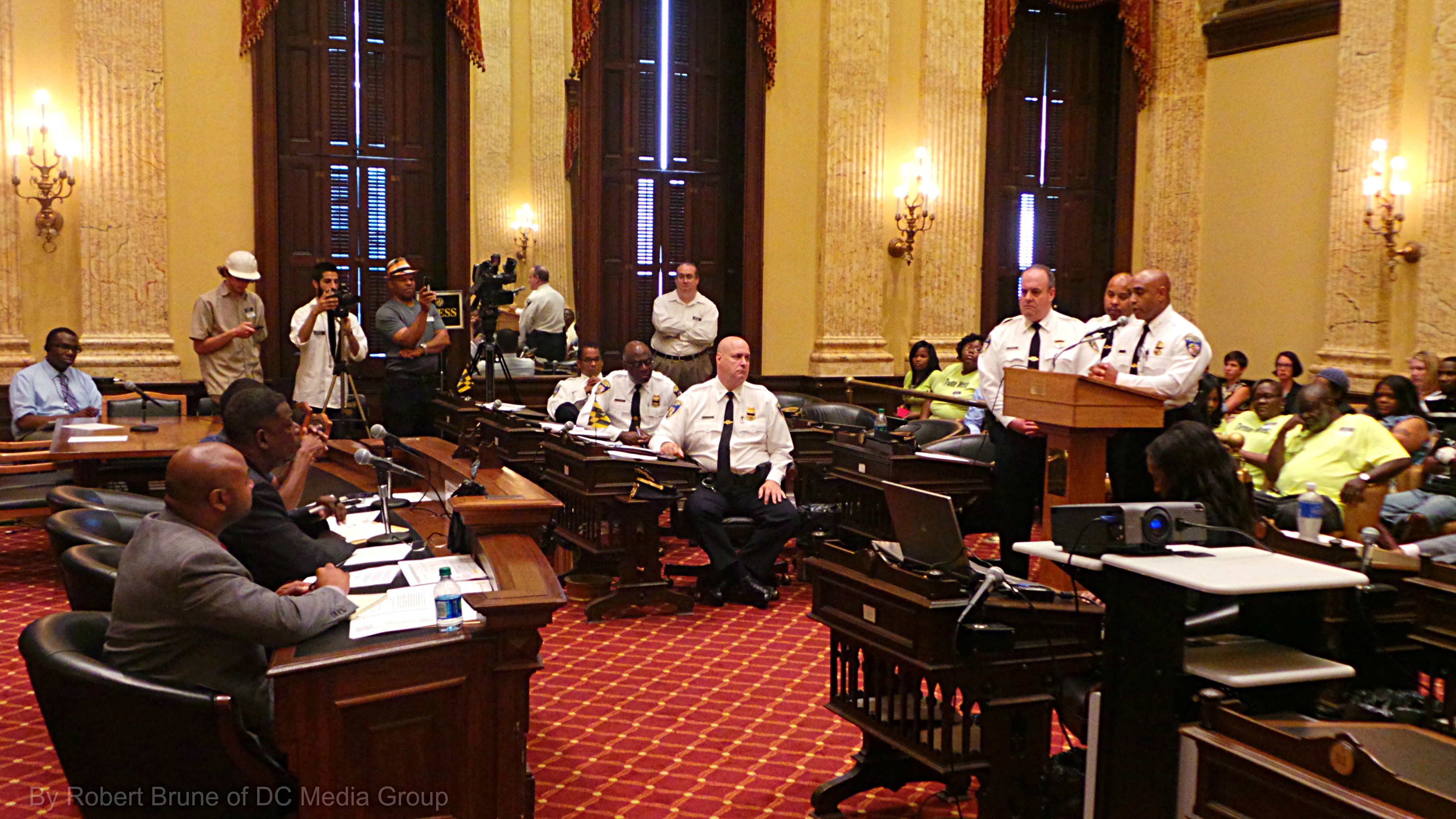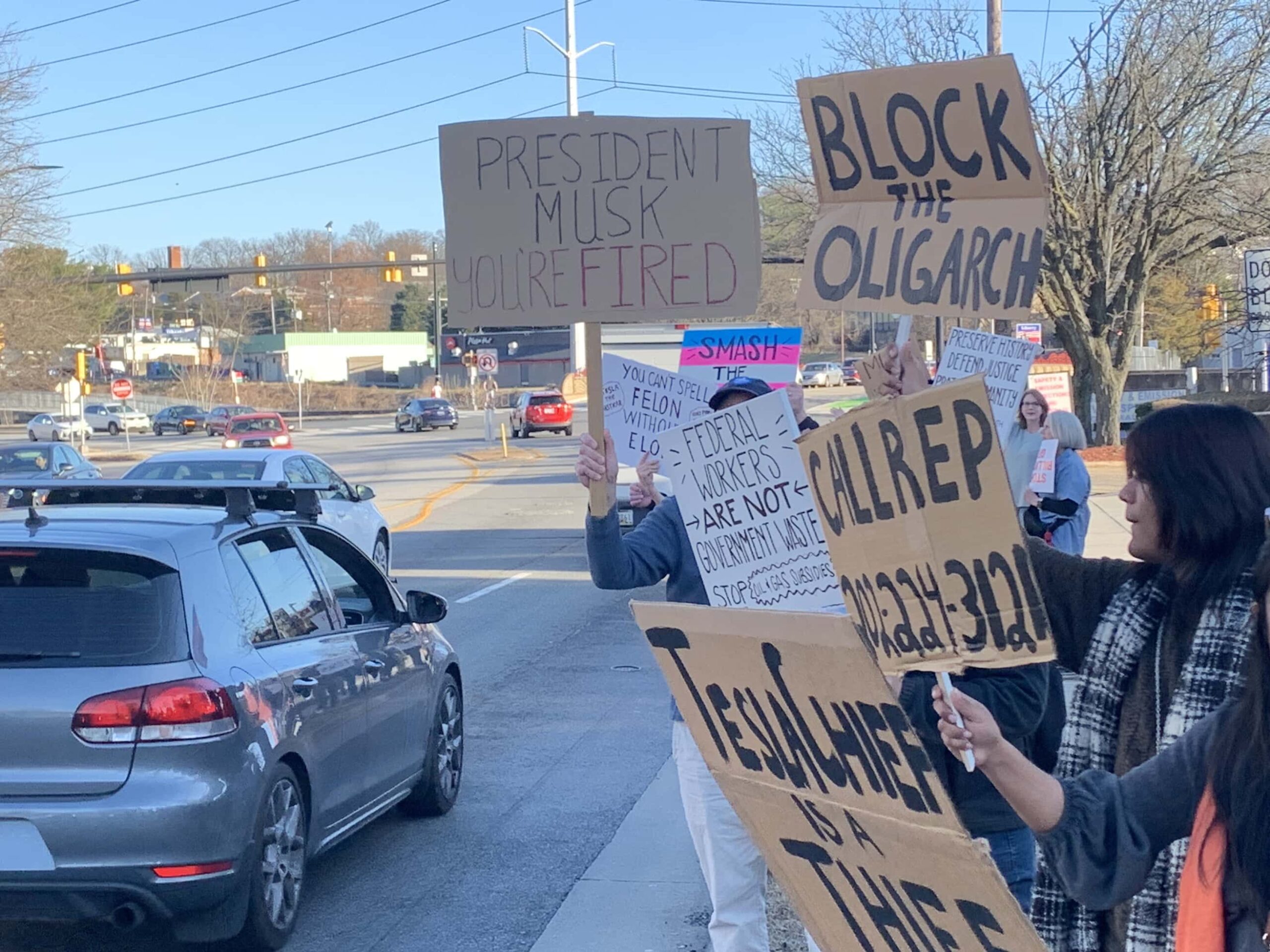
Washington DC — Anne Frank wrote in her diary, “A single candle can define and defy darkness.” Her diary chronicled the last year of her family’s attempt to remain hidden in an attic from the Nazi persecution of Jews during the Holocaust. She wrote daily entries as the brutality of fascism was marching across the European continent. Her Diary was found on the floor in the attic after she and her family were betrayed, arrested, and taken to a concentration camp where they perished. Her diary stands as both an historic register of the chilling effect of fascism in Holland and a documentation of her family’s personal struggle like millions of other Jewish families under Nazi occupation.
As a teenage girl coming of age, she documented what her daily family life was like living under fascism. It barely mentions the oppression of Nazism and to the contrary it chronicles her daily existence and yearning to be free and flourish. But unwritten between her prose is outlined the unfortunate results communities could face by ignoring a growing influence of authoritarian oppression of minorities in their communities. It also serves as a warning to future generations that standing by and allowing a cult of personality to take over the democracy of a republic, as what happened in Germany, can have terrible consequences for generations to come. For Germany the rise of fascism under Hitler resulted in the near total destruction of cities across Germany during World War II.
Nazis unjustly imprisoned Frank simply because of her race—she was Jewish. Her journal was found and published later and became a story of resistance demonstrating how even one person could impose themself against oppression and authoritarianism. The end of World War II saw the defeat of the Nazi regime and the toppling of major authoritarian states. Yet others rose in their wake.
This is the Part III of III in a series about the state of democracy in the U.S. Link to Part I is here and Part II is here.
Fascism in the United States
Fascism in the United States seems improbable, almost impossible, for we have two political parties and everyone gets an opportunity to vote, right? How can U.S. democracy possibly become what it helped defeat during WWII? We must think again about this because fascism is right on the doorstep of this country.
The United States is moving in the direction of 1935 Berlin and there are signs of it everywhere and what is worse, many are watching it happen and expecting someone else to do something about it. There has been a sharp trend in oppressive groups since the rise of Trumpism in 2015. In recent years the Proud Boys and Oath Keepers along with the Alt-right have joined with supremacy groups in manner mirroring the rise of fascism of pre-war Germany, Italy, and Japan. Like 1935 Berlin, they recite the same types of rhetoric the Nazis did. They have changed the language slightly but their methods are the same.
The Nazi party was not in a majority in Parliamentary Germany during the depression that hobbled the world economy after World War I, but through coercive means the Nazi party gained domination by undermining democratic institutions and seizing power from all the other political groups.
The nazis scapegoated Jews, the LGBTQIA2S community, disabled persons, and other minorities to grow a following, and by falsely casting minority groups as the culprits of Germany’s foundering economy, and post WWI difficulties, the Nazi party created fake enemies by which to gain trust of others and leverage eventual control of the German government.
But what if the German citizens who had objected to their methods had collectively joined together in a communal stand against Hitler and his minority of nationalists before they built enough power to bully and overwhelm Berlin’s democratic republic? What if they had not engaged “anticipatory obedience” towards the rising wave of fascism?
How Not to Obey Fascism
A political scientist who studies nationalist groups has written a pamphlet outlining street-legal strategies to help communities organize to stop fascism. “40 Ways To Fight Fascism,” by Spencer Sunshine, is a useful guide activists and community groups can reference at a time when oppressive groups are rooting in communities across the country. Sunshine is distributing the pamphlet free to activists and to anyone who requests a copy.
The booklet is the product of many years’ of Sunshine’s field work studying the methods and habits of nationalists and how their ideology toxifies communities. Sunshine’s work has brought him toe to toe with the extremism of the far-right in both body and in pen. And his advice on useful methods to stop fascism before it roots deeply is the harvest of that experience.
The pamphlet was originally published in 2017 as a “zine,“ a free how-to-do-it booklet. Zines are often made by hand and written under pseudonyms, distributed for free, and educate with alternative and practical useful methods ordinary citizens can take on a wide range of topics. Zines also serve to get communities to mobilize for practical solutions based on specific needs within the community, independent of regulatory governance, corporate influence, and political parties, which typically extract resources from communities instead of building them from within.
For example, what if local communities planned their own free markets and held free markets periodically using their self-help and resources. This concept of collective independence binds a community to itself and gives it the autonomy to determine its own successful outcomes. The same positive outcomes can come from within communities politically and make them less dependent upon established political parties which always extract the natural synergetic energy from communities. They’re always requesting donations during elections but one scarcely hears back following election day.
What Is Fascism?
Its easy to throw this word around without understanding what it is, and how it subjugates citizens, and how its mechanics undermines communities by targeting certain minority groups in communities. In essence it is a process by which fringe-conservative ideologies are spread and then coerce power and control as an extremist group attempts to exert its influence over the entire community. Through oppressive behaviors, such as misogyny, racism, bigotry, and sexism, nationalists and far right-wing groups focus attention on latent fear which others in the mainstream harbor of minorities and outsider groups. Nationalists drum up suspicion and fear towards minorities while promoting their ideas as solutions. The Nazis scapegoated Jews and other minorities like the LGBTQIA2S community to gain more and more control over prewar Germany. Fascist parties have a cult of personality at their center around which the party binds itself to its leader. He alone can save the nation from peril. He alone can protect them. He is a god-sent savior.
The U.S. has seen how the Trump administration dog-whistled minorities by attacking immigrants, the Transgender community, Muslims, Mexicans, the Puerto Rican community, women, political opponents, and progressives by reducing their rights and accessibility or by threatening them openly. Trump often attacked the press as well to mute dissent against his narratives. One example of this was to blame immigrants for crime, economic difficulties, and reduced job opportunities. For example, he touted building a wall to keep immigrants and Mexicans out of the country and he banned Muslim immigration from several African nations during his administration.
Consequences of Fascism in the U.S.
The roots of U.S. fascism trace back to the settlers’ occupation of this land. Settlers attacked the indigenous tribes, forced them to walk onto reservations by means of lopsided treaties, destroyed their tribes and culture, and took their land outright. This oppression wasn’t described as fascism at the time but it had the same effect on indigenous people who had lived in the US for millennia before white settlers “discovered” it.
Oppression grew for a period in the 1950s during the “Red Scare” when Senator McCarthy convened hearings to out communists in the government, Hollywood, and in corporations.
But it sprouted in a full floral display in 2016 and 2017 in the wake of Trumpism as populism took root and nationalists found support for racist ideology from Trump’s speeches and immigration policies. Trump spoke the language of white nationalists in his policies by targeting muslims from “shithole countries,” as he said when he banned immigration from five predominantly Muslim countries. He targeted latinos by saying Mexico would pay for a “beautiful wall” on its border to keep immigrants out of the U.S. He termed the Corona Virus the “China Flu,” a racist dogwhistle taking attention away from his administration’s failure to effectively prepare for and fight the spread of the deadly Corona Virus during the pandemic. He said of the Charlottesville extremists there were “fine people.” Meanwhile supremacy groups such as the Proud Boys, white nationalists, and the Alt-Right began to organize in the space he created for them.
In late 2016, Richard Spencer held a conference for his group The National Policy Institute at the Ronald Regan International Trade Building, Opponents in Washington DC took to the streets of outside because the Reagan Trade Center permitted Spencer’s conference to be held there. Warnings across the country should have been loud enough by then of what was to come. Spencer’s group met later that night in Washington DC for a celebration at a restaurant but their group was challenged by local citizens who saw his hatred and rejected it. There were clashes in the streets and mainstream media largely avoided reporting about it.
On December 2016 a large contingent of nationalists held a “Deplora-Ball” to celebrate Trump’s election. The night saw violent conflict in the DC streets near the National Press Building not far from the White House, the type of conflict not seen since the assassination of Dr. Martin Luther King, Jr.
On August 10 and 11, 2017 Richard Spencer and Jason Kessler co-organized their ‘Unite The Right’ rally over the impending removal of a statue of Civil War General, Robert E. Lee at Lee Park in Charlottesville Virginia. Spencer led an antisemetic torch rally on the University of Virginia campus on the hot night of August 11. They chanted, “ Jews will not replace us.”
The next day Spencer and Kessler joined former KKK leader David Duke in the rally which led to the Charlottesville riots. The rally included neo-nazi groups, supremacy groups, Proud Boy chapters from multiple states, white nationalists, and other far-right fringe groups from States across the East Coast. The groups confronted and turned on counter-protesters. An African-American youth was beaten by a group of extremists from the Robert E. Lee Statue rally just because he was in a parking garage car lot when they arrived. James Fields, one of the nationalists participating at the rally, later drove his car directly into a counter protest as it was just getting underway, stiking and killing Heather Heyer and striking and injuring 20 others. Virginia Governor Ralph Northam activated the Virginia National Guard as Charlottesville police declared an unlawful assembly.
After the 2020 Presidential election and near the end of Trump’s term, there was a massive mobilization of Proud Boys in Washington DC after the MAGA rallies of November and December 2020. These actiions resulted in several venerable and historic churches being vandalized, four stabbings, and many injuries.
The January 6 2020 insurrection was the culmination of 4 years’ of Trumpism and a rise of nationalism and fascism come to full bloom in Washington DC. As thousands descended on the Capital, Trump, along with his White House lawyer, John Eastman, his Chief of Staff, Mark Meadows, along with many others working in the background, organized and instigated thousands to riot at the U.S. Capitol over false claims the election was “rigged” or “stolen.” The ‘stolen election’ became known as the “Big Lie.” The insurrectionists delayed the democratic process of counting the States’ electoral votes to confirm the presidential election as provided by the 12th Amendment of the Constitution. The thousands assembled at the Capitol came very close of ending the peaceful transfer of power that day.
Now comes the 2024 presidential election and the supporters of Trumpism have circled around their single leader. They support him no matter what he says or does. He has promised “retribution“ against anyone who has previously opposed him. He has threatened to use the military against his political opponents. He has promised to be a “dictator,” if only for a day (there has never been a dictatorship that lasted a day—authoritarian leaders get into power and remain there until they die or are forcefully removed).
The U.S. is as close in its history to fascism as it has ever been and it is moving more closely towards it because Trump has created a space for it from his visible platform. If it successfully roots it could well lead to a generation or longer without a Republic.Authoritarians openly telescope their beliefs, ideas, and intentions because they need to appeal and motivate their base.
Whether or not Trump wins or loses the 2024 election is an issue entirely different from the issue of whether or not fascism is gaining traction in the United States. Trump’s base is dedicated to him no matter what he says or does. Trump’s base will continue supporting him whether or not he wins the 2024 election.
How to Fight Fascism
Spencer’s pamphlet outlines how community organizers can put power back in the hands of the community because fascism can rise often with the consent of the State. But if it is recognized and challenged early in its growth stage, it can be stopped. But it is the will of the people to determine fascism’s fate. They must be educated about it, aware that it is there, and engaging it in their community. Voting by itself is an inadequate level of engagement to keep fascism at bay—we learned this very well in 2020. The solution offered by the Democratic Party to “just vote” is not only disempowerment but it is a risk not worth taking. Yes, voting is essentially important but it the minimum amount of engagement communities should be taking.
Communities have the ultimate say in whether they will allow nationalism to lead to fascism and flourish in their midst. But they must be proactive and get out in front of it and deal with it directly, according to Sunshine.
The pamphlet is a practical organizer’s tool for ordinary citizens on how to organize, mobilize, and pool their talent and resources to stop fascist agendas from taking over and strangling democratic institutions in their communities. The common threads are to be aware, be educated, get involved, and to take action in the areas where their skills are best suited.
Skills extend from fulfilling support roles to joining community groups that track and monitor nationalist groups and members in their cities and regions
DCMediaGroup interview with Spencer Sunshine Taken on November 20, 2020
DCMG: What drew you to this line of activism?
Sunshine: It was actually how I first got into political work. I grew up in a small town in Georgia that was a locus of Far Right politics; there were regular Klan rallies and our Congressional Rep was the John Birch Society’s president. I was in the punk scene when the Nazi skinhead movement exploded in the late 1980s, and even though I was not particularly political, being of Jewish descent and having a black girlfriend immediately put me at odds with them. I ended up hooking up with an anti-Far Right counter-organizing group in Atlanta, and through that I and some other teenage punks formed what we’d now call an antifascist group to counter the domination by the Nazi skins in the local punk scene.
Around 2005, some different things brought me back to this work. One was finding out that crypto-fascists (called “National Anarchists”) had created new political groups which were trying to cross-recruit anarchists and others. (In retrospect this ended up being only part of a moment where fascist politics were being reconfigured; Alt Right became the most popular example of this, but initially it was only one of many).
So between that, and my past experience, I started learning more about—and counter-organizing against—the contemporary Far Right. I found that it was a growing movement and that there was plenty of work to do. Eventually this work took over my life!
DCMG: Why is this fighting Fascism an important issue in these times?
Sunshine: Far Right groups—which include everyone from Trump to neo-Nazis—have been in a period of intense activity since 2015. If you look historically, this movement goes in boom-and-bust cycles in the United States, and—buoyed by the president—it’s had a bull market for years.
DCMG: Why is it important for ordinary (not just activists) to get involved in pushing back against fascist ideologies in their communities?
Sunshine: Over the last four years, it’s been very clear that the national progressive non-profits and others are not going to do any substantive grassroots work to contain this movement (even though some groups do important lawsuits and research). So it’s really up to grassroots activists to contain local Far Right organizing.
DCMG: There are 40 ways…why did you pick the number 40?
Sunshine: Well, originally it was 50 but after I worked through them, 40 was how many solid, different ones I came up with. Basically I just wrote down all the different strategies that I had done, witnessed, or heard about from all kinds of groups. These ranged from German antifascists, community-based groups and non-profits, anti-racist skinheads, and of course the U.S. antifascist movement of the last few decades, from Anti-Racist Action on. PopMob, the group I did the revised version with, also added in the things that had been successful for them.
DCMG: What other projects are you focused on at the present?
Sunshine: I regularly write about where the US Far Right is at and heading to for a variety of platforms, especially Truthout. I’m working on a number of books, including co-editing an anthology of essays dedicated to longtime Far Right monitor Chip Berlet, who has just retired after 40 years. I am also writing a book about the origins of James Mason’s book Siege, which has become the bible of the terrorist wing of today’s young neo-Nazis.
What can people do to push back against the rising trend towards authoritarianism and/or fascism who don’t want to be directly involved?
(I knew the guide addresses this question but I wanted to ask Sunshine anyway.)
40 Ways to Fight Fascists offers a number of options which you can do from the comfort of your own home and which pose no risk. These include helping people injured by fascists and those who are imprisoned fighting them, as well as aiding the families of those who have been murdered.
What are several of the most important of the 40 ways to fight fascism?
They are all pieces of a bigger puzzle, because you don’t want to have just one or two in play—that can be dangerous. That said, doxxing them and spreading that information is the best, most effective legal and non-violent tactic available to grassroots organizers.
Anything else you would like to add about writing the guide?
Even if Trump slinks off the national stage relatively peacefully, the Far Right isn’t going to just go “poof!” and disappear. I hope that this guide can help inspire people to take action against this toxic political movement.
DCMG: What can you tell me about yourself?
Sunshine: The less you know the better! Fash always want to find this more about me. Let me just say: no matter who you are, what your identity is, or what skills you have—you can make a concrete contribution to fighting fascism.
Link to 40 Ways to Fight Fascism here.
Tools For Fighting Racism
Popular Resistance offers a free online course which connects the dots in the relationship of racism and healthcare denial to minorities. You may access it here.
Salon article and references to what Fascism is and how it can strangle a democratic republic can be found here.
Video explaining fascism by Robert Reich, Inequality Media Civic Action here.
Grassroots organizations you may explore to educate yourself about or plug into to organize against nationalism and fascism:
Idavox.com (One People’s Project)
It’s Going Down: https://itsgoingdown.org
Centre for analysis of the Radical Right:
www.radicalrightanalysis.com
Western States Center: www.westernstatescenter.org
Montana Human Rights Network: https://mhrn.org
Rose City Antifa: www.rosecityantifa.org
Political Research Associates: www.politicalresearch.org
Institute for Research on Male Supremacism: www.malesupremacism.org
Examples of Successful Community Organizing
In 2022 to the present the Drag community became known among extremist groups for their story hour book readings for children. The extremist channels began targeting Drag Story Hour readings and by harassing and terrorizing the families who took their children to these events. The purpose of these events were to engage families and interest children in education by reading and theatrically performing children’s stories.
In response to the various community groups organized direct action umbrella lines outside the venues in advance to shield children and families attending the readings from the harassment by extremists. They actually held colorful umbrellas and danced to music outside the venues to thwart extremists’ attempts to disrupt them. Extremists including Proud Boy groups and evangelicals would show up at the reading venues to try to disrupt or stop them altogether. The community participants held the line while others activists provided lookout support nearby by walkie-talkies to keep the venues safe. Police would often show up but were completely ineffective at protecting the families.
Stories on these citizen-led actions are here and here.
Whenever extremists have tried to rally or march in Washington DC the community has organized to let them know their rhetoric and racism is not welcome here.





